Anatomy (Parts) of a Gas Grill Guide
Our Anatomy (Parts) of a Gas Grill Guide will help you identify the parts in your gas grill. It is helpful when replacing a grill part.
A gas grill anatomy is broken into three sections : The Hood, The Cooking System and The Grease Management System. The Cooking System is composed of the firebox and its interior components - Burner, Cooking Grates, Heat Distribution and Ignition. In the following capsules, we will breakdown the function of each of the internal parts of the grill.
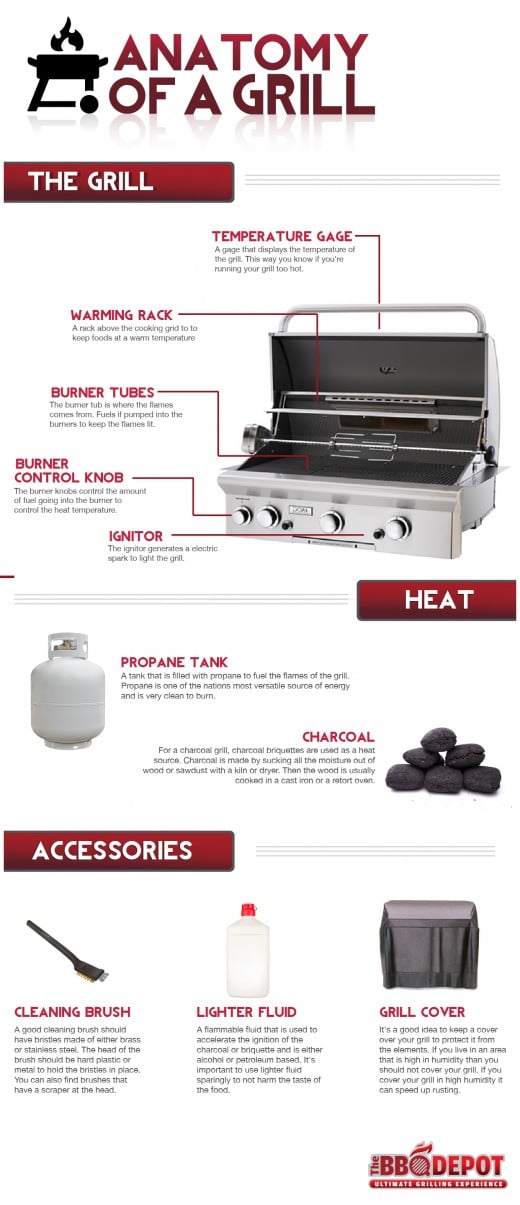
Burners
Gas grill burners are the heart beat of the grill and part of the cooking system. They allow gas (natural or propane) to enter at one end and then allowing it to escape. Typically burners are lined with tiny pin-size holes along an edge which is where the gas “escapes”. Burners are always place underneath cooking grids as they supply the heat for cooking.
Burners distribute heat/flames across a barbecues cooking surface by delivering gas via tiny openings that allow gas to escape. Burners, are the heartbeat of the grill, they quite literally “Bring the Heat”. Regardless of what material your burners are made from, odds are they will eventually wear down, and need replacing. Proper care and routine maintenance will add years of life to your gas grill burners.
Burners are configured in various shapes, manufactured from several kinds of metals and are designed in seemingly endless sizes. They come in either blue flame (like traditional grills) and infrared. Infrared is an intense high heat burner that uses gas but reached high temperatures from a ceramic plate that sits on top of the burner. These are great for searing meats. They warm up fast, quicker cooking times, hotter searing temperatures quicker, and faster cool downs all result in less heat and pollution, less total gas usage, and professional high-end steak house results that taste better to boot!
Are you replacing the gas grill burners in your grill? Remove the existing burners from your barbecue grill and measure them to obtain exact dimensions for depth (front to back) and width (left to right).
Stainless steel burners have a surface that is easy to clean. However, once the “surface” gunk is off, you will have to clear out debris from each of those tiny holes on the burner. This should be done ONLY be done with the grill turned off and when it is cool.
Cast iron burners are heavy and a lot more fragile than one might think. Be careful when handling them during installation or cleaning. Any sort of crack anywhere on the burner is equivalent to a leak rendering the part unusable – and likely dangerous.
Are you hoping to replace your cast iron burners with stainless steel burners? Consider the advantages against the disadvantages before you do. Cast iron is an excellent heat conductor. Stainless steel will conduct heat effectively and efficiently also but cast iron will retain heat much more effectively than stainless steel or brass.
Cleaning burners after each use will do way more than simply improve how your grill looks. Food particles often stick to grill surfaces (including burners), and after repeated use (or depending on which foods you tend to grill) these particles will build up creating a very real fire hazard. Grease fires can happen outdoors as well so keep that in mind the next time you want to skip cleaning them.
Help prevent grease fires or flash fires by cleaning your burners after each and every use. It may seem like an unnecessary chore to add to your list but it’s much easier to wipe clean a few burners than it is to clean up damages created by a fire.
Meats high in fat (ground beef, marbled steaks etc.) will undoubtedly drip grease all over your burners (and beyond…). When grease pools there is just as much risk for fire as there would be if you were cooking on your stovetop. Remember to NEVER attempt to extinguish a grease fire with water. Doing so will cause the fire to spread.
Blue Flame vs. InfraRed
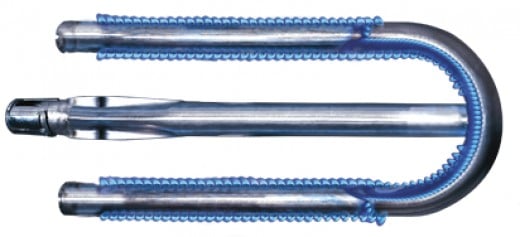
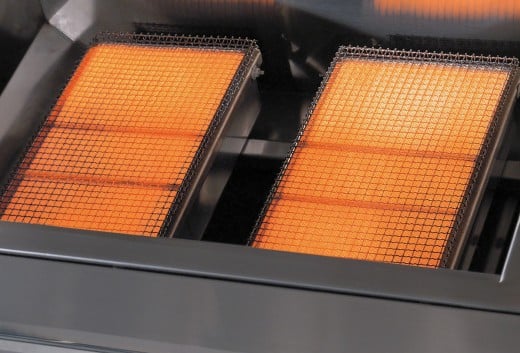
Traditional Blue Flame Burner Infrared Burners in a Solaire Grill
Cooking Grates
Barbecuing is not only an excellent way to seal in flavor when cooking meats and veggies, but it’s also a great way to bring people together for a fun and delicious meal. Grill grates, the metal grate that holds your food above the fire, are an integral part of the barbeque experience. Like other parts of your barbeque, cooking grates need to be free of rust, dirt and other contaminants that could spoil your food or your health. Good grates can also add extra zest to your meal with those classic seared grill marks in the meat.
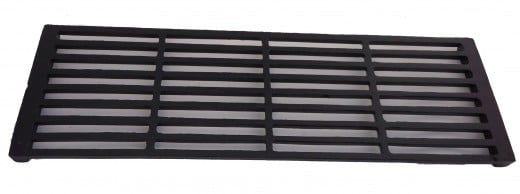
Cast Iron Cooking Grate
Why Buy New Grill Grates?
If you have had your barbeque for a while, you have probably noticed that the grease and fat from the meat you cook can make a mess on the different grill parts. Over time, the grates that you use to cook the meat can become encased with debris from cooking, even if you habitually clean and oil the grates. In these cases, you can get more flavor and enjoyment out of your barbecuing experience by using new cooking grates. After a while, grates often become rusty and deteriorate. Rust makes food stick more to the grates, adds bad dirt and metal flavors to your food and, in extreme cases, can be a health hazard if you accidentally ingest larger shards of rust. You can avoid these annoyances by buying new grates that fit your grill and cooking habits well.
Types of Grill Grates
Stainless Steel, cast iron and porcelain are all used to make cooking grates, and often the grates use a base of steel or iron with a porcelain non-stick coating. Cast iron and steel cooking grates are often most associated with non-stick features since they have a porcelain coating. Which is best? We suggest stainless steel since it will last the longest. While cast iron hold the heat the best, it requires the most maintenance. Be careful not to chip the porcelain coating, the grids will rust very fast.You can find grates to fit common round charcoal grills and all different sizes of gas grills. Think about the food that you want to cook when you decide which type of grate to buy. If you cook smaller foods like pepper or mushrooms on the grill, you will want grates that have few open spaces because these grates prevent smaller foods from falling into the fire. Grates can also leave great grill marks on meats when you let them get hot enough to sear the meat. Choose a grate pattern that you find appealing so you can get perfect grill marks every time you barbeque.
Heat Plates
Everybody loves to grill; it is a great way to prepare the best cuts of meat and a fun activity that people can do together. What if there was a way where you could add flavor to your food while helping keep your grill clean? Luckily, with grill heat plates, you can do just that. Also called burner shields, gas grill heat plates, heat tents, radiation shields and heat angles, these great grill accessories are a must-have for any serious griller.
What Grill Heat Plates Can Do For Your Grill
Heat plates rest on your gas grill burners and disperse the heat that the burner produces evenly throughout the grilling surface. This helps prevent uneven cooking and maximizes your grilling space to fit more meats. Gas grill heat plates also protect your burners from corrosive grease and other drippings that fall from meat and foods during grilling. Over time, these drippings can build up on your burners and prevent the burners from working properly. In addition to protecting the burners, heat plates vaporize drippings so that they don’t build up on the plates themselves, and many plates use materials that are bacteria resistant. Additionally, when meat drippings fall onto the gas grill heat plates, the plates release the flavor from the drippings into the air surrounding the grill. The aroma of this vapor adds flavor to whatever you are grilling.
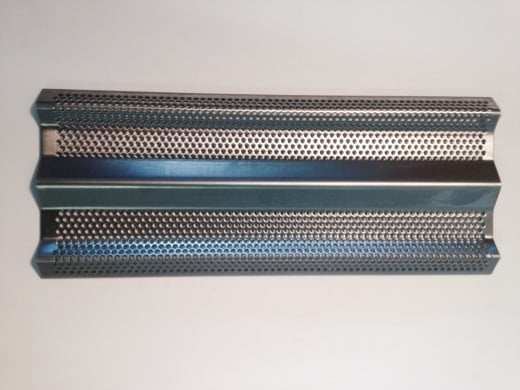
Stainless Steel Heat Shield
How to Buy a Gas Grill Heat Plate
The first thing you need to consider when buying a grill heat plate is the size of your grill's burners. The plates should be big enough to protect the burners and vaporize enough meat drippings. Check your grill's owner's manual or simply use a tape measure to find the length, width and height of the burners. Gas grill heat plates generally come in stainless steel or porcelain coated steel while rock grates are often galvanized steel. All of these materials are able to protect your burner and add flavor to your food, so you should pick a material that goes well with your grill and that you enjoy.
Venturi Tubes
One of the best parts of a gas grill is the fact that you can enjoy all the benefits of grilling on command in any area or type of weather. Your grill is still susceptible to malfunctions, however, and long periods of wear and tear lead to some parts breaking down. Many gas grills use a venturi burner system where the grill's burners are fed gas and air through venturi tubes. These tubes are affected by the environment that surrounds them and sometimes break down. If the venturi burner does break down, you face a decision -- do you buy a replacement grill and throw your old one away, or do you find a replacement tube for your old grill?
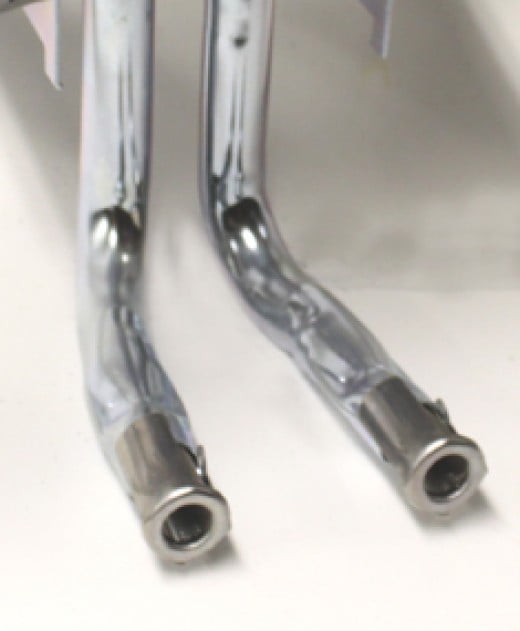
Venturi Tubes connect to the bottom of Oval, H-style and Bow tie burners
What are Venturi Tubes
Venturi tubes mix gas and air in the tubes before sending the mixture on to the burners where the mixture is ignited and used to produce flame. The tubes are named for the Venturi Effect, which states that as liquid moves through a narrow tube to a wider tube, it accelerates and decreases in pressure at the narrow end and decelerates and increases in pressure at the wider end. The practical effect of the venturi burner system is that the tubes control the fuel for the grill and are therefore integral in controlling the temperature of the grill.
Why You Should Replace Your Venturi Tubes
The environment surrounding your grill can have a great effect on the venturi burner system. Often insects and dirt are attracted to the tubes, and both can clog the small openings that allow air to flow into the tube. If the tubes get too clogged, they can become a safety hazard. Tubes have exploded in the past because of clogs and the changes in pressure in the tubes. You don't want to have clogged tubes for cooking reasons as well. Clogged tubes can distort the level of heat that you think you are sending to the grill, changing the level that the grill's burners actually receive. With new tubes, you will be able to properly control the temperature, turning up the heat when you need it and cooling it down when you want to slow cook your food.
Repair Parts
Grilling can take you back to a simpler time, with people enjoying each other’s company over an open fire with delicious food. Sometimes, however, after many years of cooking, grill parts tend to malfunction. When this happens, you have two choices -- you can either throw the entire grill away and spend a couple hundred dollars buying a new grill, or you can install a new replacement part to fix the grill and make it function again. Buying a grill repair part can be the most economic and convenient option for many people, as they save money with the part and do not have to build an entirely new grill.
Why Buy Replacement BBQ Grill Parts
Grills can wear down through repeated use and consistent exposure to the elements, especially certain gas grill parts that are often exposed to food drippings. Sometimes, after many years, the wear and tear on these parts becomes so great that the parts become completely unusable. You don't have to replace your grill every time one part breaks. Many grill parts are easy to install, and the total cost that the replacement gas grill part consumes is far less than the time and money it would take to buy and set up a new grill.
Additionally, gas grill parts can also add new features and functions to your grill. For example, drip pans make indirect grilling, like using wood chips to smoke meats, much more flavorful and less damaging to your grill. Fill the drip pan with water to add additional steam and smokey flavor to your meats.
Cleaning & Maintenance
Everyone loves the feeling of cooking a nice slab of meat on the grill, but in order to keep that feeling over time, you need to properly maintain your grill. With the weather, a variety of different food drippings, the buildup of rust and dirt, as well as general wear and tear, damage to a grill is inevitable over time. However, proper cleaning can help curb that damage.
Why You Need Grill Cleaner
Food drippings can be coercive and build up on grill parts over time, most noticeably on the grill grates. Grills are also exposed to the elements; going through the changing temperatures of the seasons can wear down a grill. During rough storms, water can find its way into even the covered parts of the grill. During wind storms, dirt and other debris can pelt the grill and get clogged in important grill parts. The venturi tubes are particularly susceptible to dirt and insects clogging the small holes in the tube that allows air to mix with gas in gas grills. In some cases, if they get clogged, the tubes can even explode, causing a very dangerous situation. Grill cleaning not only keeps your grill looking good, but it can keep you safe as well.
Different kinds of Grill Cleaners
Cleaning and maintenance is an ongoing process that requires you to clean in the short term as well as in the long term. Below are some common grill cleaning supplies and their uses that can help you keep your grill like new.
Brushes: Wire brushes are commonly used to wipe down grills every time someone uses the grill. This is good practice, but most people don't know that it is actually better to wipe down the grill after you are done grilling, not just before your next grilling. Food drippings and grease are more easily cleaned while the grill grates are still warm.
Degreasers: These spray-on substances are used to remove built up grease and food drippings from grates and other parts of the grill. Use this grill cleaner periodically. The sprays come in environmentally friendly versions for conscientious grillers.


